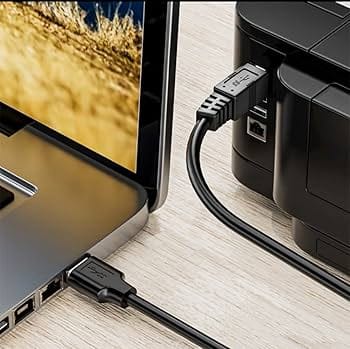Exploring the Future of Surveillance: The Rise of AI CCTV Solutions

Introduction to AI Enhanced Surveillance
In an era where security is paramount, advancements in artificial intelligence (AI) have significantly uplifted the surveillance sector. AI-enhanced surveillance systems mark an evolutionary step in business security, integrating intelligent monitoring, and cloud-based innovations to transform the way we approach threat detection. With AI CCTV solutions, cameras are no longer passive recording devices. They now analyze footage in real-time, navigating CCTV cloud storage, and providing actionable insights. Businesses are embracing these cloud CCTV solutions, leveraging the advantages of cloud-based video management systems to enhance small business security. Choosing the right service for your needs involves careful consideration of cloud services integration, ensuring a safe and seamless deployment. Remote vigilance has become more sophisticated with intelligent video surveillance apps that cater to diverse security requirements. This fusion of technology heralds the future of enhanced perimeter security, as AI-driven surveillance becomes integral to the evolution of business security strategies.
The Evolution of CCTV: From Analog to AI
Closed-circuit television (CCTV) technology has undergone a tremendous evolution since its inception. The early stages were marked by analog cameras, simplistic in function and limited in scope. These devices simply recorded footage onto tapes, offering base-level surveillance capabilities. As businesses prioritized enhancing security, analog systems gradually gave way to digital solutions, enabling better image quality and easier storage on physical hard drives.
The emergence of cloud-based video management systems marked a significant leap forward. Integrating security camera cloud services allowed for remote access to live and recorded footage, which was particularly advantageous for ensuring small business security. Navigating CCTV cloud storage options and choosing the right service became an essential strategy for safe and seamless deployment.
With the advent of artificial intelligence (AI), the landscape of video surveillance has been revolutionizing once more. Intelligent monitoring now entails automated video surveillance capable of recognizing patterns and predicting potential threats. This advanced level of threat detection signifies the future of enhanced business security, leveraging cloud-based monitoring for smarter, proactive surveillance strategies.
CCTV solutions continue to evolve, embracing AI technology to deliver more sophisticated and comprehensive security systems that cater to the dynamic needs of modern businesses. Remote vigilance has been further amplified, with users now having the power to choose the right video surveillance app for their needs, ensuring persistent and intelligent guarding of their assets.
How AI is Transforming Security Monitoring
Artificial Intelligence (AI) is revolutionizing the way security monitoring is conducted. Through integrating security camera cloud services, businesses are deploying AI CCTVs that offer intelligent monitoring capabilities. This shift is enhancing small business security by providing:
- Automated threat detection, drastically reducing response times and minimizing the risk of human oversight.
- Sophisticated algorithms navigating CCTV cloud storage, ensuring a proactive approach to incident review.
- Streamlining the process of choosing the right service for your needs, with AI assisting in analyzing vast amounts of data for informed decision-making.
Furthermore, the advantages of cloud-based video management systems are becoming increasingly clear as AI analytics facilitate:
- Remote vigilance, allowing users to select the right video surveillance app tailored to their specific requirements.
As AI continues to advance, the future of business security seems intertwined with embracing cloud CCTV solutions, promising a safer and more efficient surveillance ecosystem.
Privacy Concerns and Ethical Implications
As the future of surveillance unfolds, businesses and individuals must grapple with privacy concerns and ethical implications inherent in AI CCTV solutions. The proliferation of cameras and the ability to navigate CCTV cloud storage, or choosing the right service, have heightened potential threats to individual privacy rights. Enhancing small business security and the advantages of cloud-based video management systems often come with the challenge of maintaining confidentiality and preventing abuse of surveillance data.
- Data Protection: Businesses must ensure that integrating security camera cloud services does not compromise sensitive information.
- Consent Issues: The rise of intelligent monitoring and automated video surveillance in public and private spaces raises questions about consent and the expectation of privacy.
- Bias and Discrimination: AI algorithms, despite revolutionizing threat detection, can inadvertently perpetuate bias, leading to discriminatory practices.
- Accountability: Embracing cloud CCTV solutions and leveraging cloud-based monitoring means establishing clear policies on who is accountable for the data captured and how it is used.
The need for a balance between remote vigilance and respecting personal privacy is paramount, as societies strive to protect against misuse while reaping the benefits of technological advancements in surveillance.
AI CCTV in Action: Case Studies and Applications
- Navigating CCTV Cloud Storage: A multinational company implemented a cloud-based CCTV system to enable remote accessibility of real-time video data across various global offices. This integration allows for quick navigation through vast amounts of footage, significantly enhancing the operational efficiency of their security teams.
- Integrating Security Camera Cloud Services: A university faced challenges in maintaining and updating its security infrastructure. By integrating cloud services with its security cameras, the university was able to deploy updates automatically, ensuring the latest security features were always active.
- Enhancing Small Business Security: A retail store utilized AI-enhanced cameras to deter theft by analyzing customer behavior. The system flagged suspicious activities, allowing staff to respond proactively. The advantages of cloud-based video management systems were clear in this scenario, providing cost-effective security enhancements.
- Intelligent Monitoring: At an airport, automated video surveillance was employed to streamline operations and detect potential threats. AI algorithms analyzed live footage to identify unattended luggage and alert security personnel, revolutionizing threat detection without interrupting passenger flow.
- The Evolution of Business Security: A logistics hub embraced cloud CCTV solutions, replacing old analog cameras with AI-powered devices that could track and analyze the flow of goods, detecting bottlenecks and improving overall security and efficiency.
Remote Vigilance: Homeowners choosing the right video surveillance app were able to monitor their property from afar. AI CCTV provided notifications of movement detected outside of preset hours, offering peace of mind through enhanced security measures.
The Future of Public Safety and Crime Prevention
As surveillance technology evolves, public safety and crime prevention are set to undergo a transformative shift. AI CCTV solutions are the driving force behind this change, offering intelligent monitoring that is revolutionizing threat detection. These systems go beyond passive recording; they analyze patterns, mark anomalies, and can trigger real-time alerts to prevent incidents before they occur.
Businesses are not only embracing Cloud CCTV solutions for their enhanced security capabilities but also for their scalability and ease of access. Integrating security camera cloud services is becoming a key strategy for businesses aiming for seamless deployment and remote vigilance. By navigating CCTV cloud storage and choosing the right service, businesses can ensure their security needs are met with efficiency and reliability.
For smaller establishments, enhancing small business security has become more practical with the advantages of cloud-based video management systems. These platforms offer cost-effective ways to store, manage, and analyze video footage without requiring large investments in hardware infrastructure.
Ultimately, for those responsible for maintaining safety, how to choose the right video surveillance app and the strategies for safe and seamless deployment will be crucial in maintaining the integrity of their security posture. The imperative need for remote access and control facilitates a transition towards comprehensive and agile crime prevention methodologies. AI-powered surveillance is setting the stage for a new era in public safety—one where prevention is paramount and security is smartly intertwined with technology.
Navigating the Challenges: Regulation and Public Perception
Deploying AI CCTV solutions extends beyond simply installing cameras; it entails understanding and adhering to legal regulations while also managing public sentiment. As technological advances enhance small business security, the shift towards cloud-based video management systems prompts a complex web of privacy concerns and regulatory compliance.
- Businesses must navigate CCTV cloud storage laws, ensuring data protection and choosing the right service for their needs.
- Public perception plays a crucial role; transparent communication about intelligent monitoring practices can mitigate privacy fears.
- As automated video surveillance revolutionizes threat detection, it likewise challenges norms, demanding careful regulation engagement.
- Strategies for integrating security camera cloud services must include plans for smooth deployment without compromising user trust.
- Remote vigilance tools, like selecting the right video surveillance app, require a balance between functionality and respectful privacy practices.
Firms are thus tasked with the delicate act of leveraging these advancements to ensure robust business security while maintaining ethical standards and public confidence.
Conclusion: Balancing Security and Privacy in the AI Era
In navigating the intricate landscape of AI-enabled CCTV solutions, entities must tread carefully between enhancing security and safeguarding privacy. The incorporation of cameras with intelligent monitoring capabilities holds the promise of revolutionizing threat detection, but it also raises serious privacy concerns. The key lies in choosing the right services for one’s needs—ones that not only offer robust cloud storage and video management systems but also respect individual privacy.
For small businesses, cloud-based video management systems enhance security without the complexities of traditional surveillance systems. They allow businesses to embrace the evolution of business security with cloud CCTV solutions that offer ease and efficiency.
As organizations integrate security camera cloud services, strategies for safe and seamless deployment must ensure that the enhancements in surveillance—such as automated threat detection and remote vigilance—do not come at the cost of eroding privacy. Achieving this balance requires a conscientious approach in selecting video surveillance apps and cloud services, considering both their security benefits and privacy implications.
The future of surveillance, especially with the integration of AI, necessitates that security practitioners and policymakers collaborate on regulations and best practices. The goals must include protecting individuals’ rights while leveraging advanced technologies to create safer communities. Only through such collaborative efforts can we ensure a responsible transition to the new era of surveillance technology.




